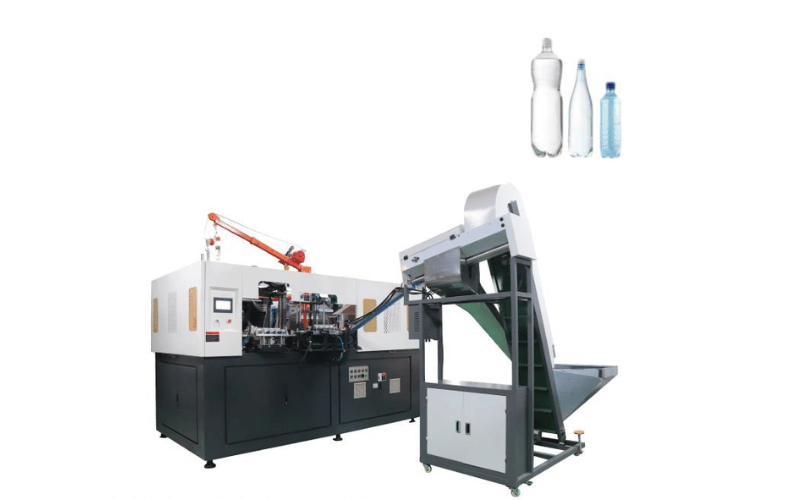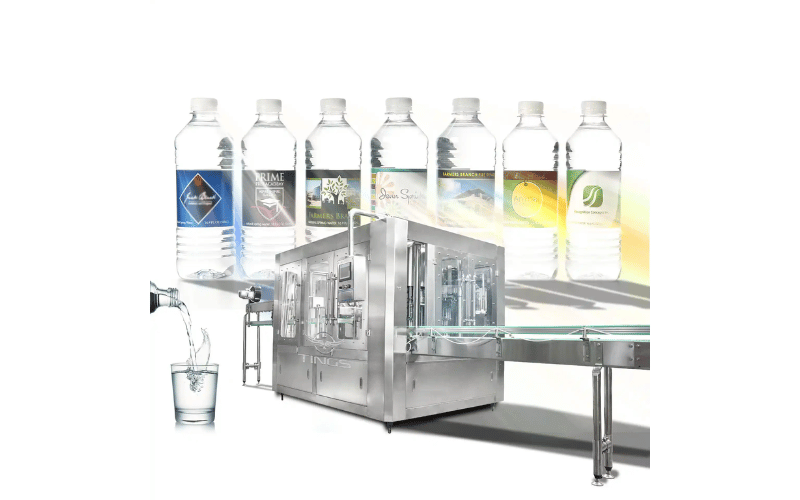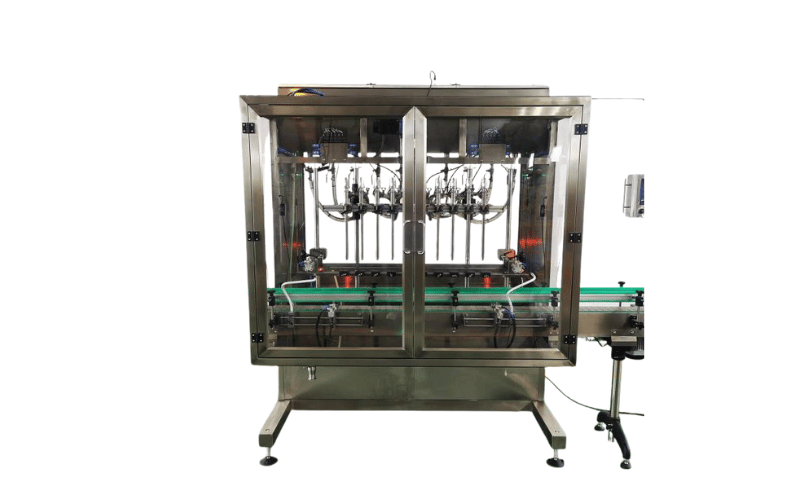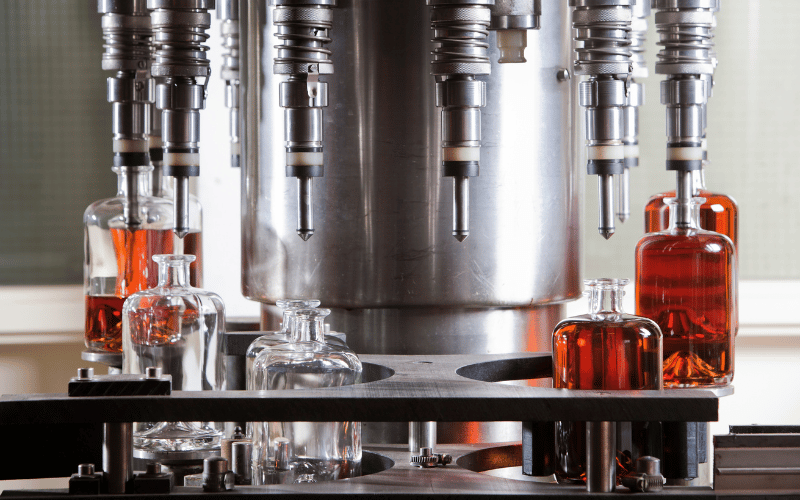Manufacturing processes often rely on specialized equipment to create precise and consistent products efficiently. Blow machines are a vital part of this toolkit, especially in industries where durable and lightweight plastic products are essential. This article will explore what blow machines are, how they function within the blow molding process, and the various types available, outlining their distinctive features and applications.
Table of Contents
ToggleDefinition and Purpose of Blow Machines
Blow machines are specialized machinery used to produce hollow plastic components, such as bottles, containers, and industrial parts. These machines form plastics by inflating a molten polymer into a pre-designed mold. The primary purpose of blow machines is to manufacture lightweight, durable products with intricate shapes, making them integral to sectors like packaging, automotive, and consumer goods.
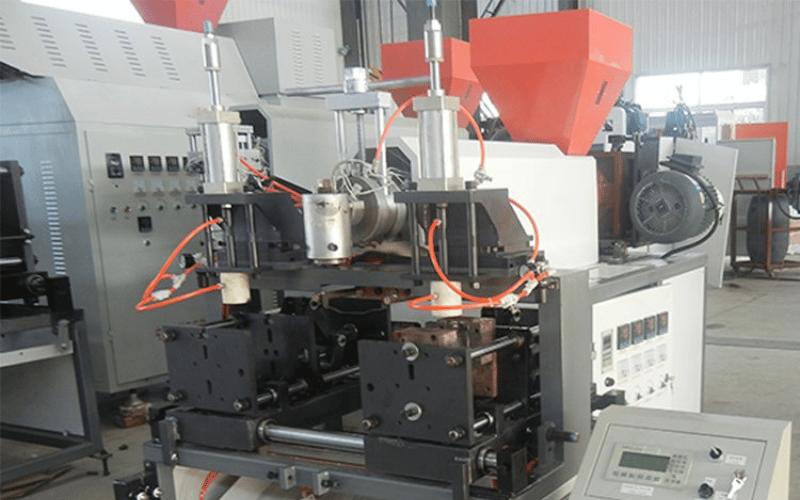
Overview of Blow Molding Process
The blow molding process involves three key stages—heating, molding, and cooling. First, the raw plastic material is heated until it’s pliable. Then, the softened polymer is placed into a mold where compressed air is introduced, inflating the plastic to fit the contours of the mold precisely. Finally, the molded item is cooled and ejected as a finished product. This process ensures uniformity, enabling high-volume production of intricate hollow shapes.
Types of Blow Machines
Extrusion Blow Machines
Extrusion blow machines are the most common type, where plastic is extruded into a hollow parison that is then inflated. These machines are ideal for producing items like plastic bottles and drums.
Injection Blow Machines
Using a preform created by injection molding, injection blow machines deliver high precision and uniform wall thickness. They are commonly used for pharmaceutical and cosmetic containers.
Stretch Blow Machines
Stretch blow machines combine aspects of blow molding and stretching. They are particularly effective for producing lightweight, durable containers such as PET bottles, often used in beverage packaging.
Each type of blow machine caters to specific product requirements, providing versatility and efficiency across different industrial needs.
How Bottle Blowing Machines Work?
Modern manufacturing relies on versatile and efficient equipment to meet global demand for lightweight and durable products. Bottle blowing machines play a pivotal role in these processes, particularly in shaping plastic bottles for industries like beverages, pharmaceuticals, and personal care. This article breaks down their functionality, the components that make them work, and the critical stages of the process.
Components of a Bottle Blowing Machine
Preform Loader
This component feeds the preforms—small, molded pieces of plastic—into the machine. The loader ensures a consistent supply, maintaining a smooth production flow.
Heating Unit
The heating unit softens the preforms by exposing them to controlled temperatures. This process gives them the flexibility needed for shaping.
Mold Cavity
The mold cavity is where preforms take their final shape. Shaped metal molds are designed with intricate detail to match specific product requirements.
Stretch Rod and Air Blower
These elements work in tandem to stretch the softened preform vertically and inflate it into the mold, creating the desired bottle shape.
The Role of Compressed Air in Bottle Blow Molding
Compressed air is a key element in forming the bottles. Once the preform is inside the mold, high-pressure air is introduced, expanding the heated plastic until it conforms to the mold’s interior. This process ensures accurate shaping and consistent quality. Proper air pressure is crucial for uniformity and efficiently producing large volumes.
Steps in the Bottle Blowing Process
- Loading Preforms
Preforms are placed into the loading system and smoothly transferred to the next stage.
- Heating
The preforms pass through a series of infrared heaters, softening the plastic to its ideal pliable state without melting it.
- Molding
A preform enters the mold cavity and is stretched by a rod. Simultaneously, compressed air is injected to push the plastic against the mold’s walls.
- Cooling and Ejection
The molded bottle is cooled to solidify its shape before being ejected from the machine, ready for use or further processing.
Efficient bottle blowing machines are integral to high-volume production, ensuring precision and speed while minimizing waste.
Heating and Melting in Blow Molding
The blow molding process relies heavily on the precise manipulation of materials to create high-quality, hollow plastic products. At its core, heating and melting plastic are critical initial steps that lay the foundation for the subsequent molding stages. This article elaborates on why this phase is so essential, the various methods used, and the role of temperature control in assuring optimal results.
Importance of Hot Plastic in the Process
The heating and melting of plastic transform solid material into a pliable state necessary for molding. Correctly heated plastic ensures even distribution within the mold, resulting in uniform wall thickness and durability. Overheating or underheating can compromise product integrity, leading to defects such as weak points or inconsistent shapes. Proper heating ensures a seamless flow, which is vital for producing visually appealing and functional items.
Methods of Heating and Melting Plastic
Infrared Heating
Infrared heaters apply direct, controlled heat to preforms or parisons, warming them evenly and efficiently. This method is energy-efficient and produces consistent results with minimal waste.
Convection Heating
Convection heating uses circulating hot air to gradually increase the material’s temperature. Ideal for larger production runs, it provides uniform heating but typically takes longer than infrared methods.
Internal Heating Elements
For certain blow molding machines, internal heating components melt raw materials before extrusion or injection. This method offers precise temperature control during the shaping process.
Controlling Temperature for Optimal Results
Precise temperature management is essential for maintaining plastic quality during heating and melting. Advanced systems monitor and adjust temperatures to ensure consistency, reducing the risk of defects. Maintaining optimal conditions ensures the material responds predictably, enabling high-volume production with minimal errors. Improved control also contributes to energy efficiency, enhancing overall cost-effectiveness.
By emphasizing accuracy during the heating phase, manufacturers achieve superior results, producing safe and reliable plastic products that meet industry standards.
The Production Process of PET Bottles
The production of PET bottles is a highly automated process that combines precision, efficiency, and advanced technology. By understanding each stage, from creating the parison to quality control, manufacturers can ensure consistent, reliable products for industries like beverages, cosmetics, and household goods. This breakdown explores how raw materials are shaped into durable, lightweight containers and the rigorous checks in place to meet global standards.
Creating the Parison for PET Bottles
The first step in producing PET bottles is creating the parison or preform—small, tube-like structures that serve as the foundation for bottle formation. Made from polyethylene terephthalate (PET) resin, preforms are crafted using injection molding machines. During this stage, PET granules are melted at controlled high temperatures, then injected into a mold that cools and hardens the material into its initial shape. These preforms are designed with precision to ensure they’re suitable for the next phase.
Blowing and Forming the Final Product
Once the preforms are ready, they are heated to become pliable and placed into a mold designed to create the final bottle shape. A stretch rod extends the preform vertically while compressed air is blown into it, expanding the softened PET until it takes the exact form of the mold. This stretch blow molding process ensures that the bottles are lightweight yet durable, with consistent wall thickness and tailored designs.
Quality Control in Bottle Production
Quality assurance is crucial in every stage of PET bottle production. Automated inspection systems check for imperfections, such as irregular shapes, improper sealing surfaces, or weak spots. Manufacturers also conduct periodic stress tests to ensure the bottles meet strength and durability requirements. Ensuring strict quality control measures not only minimizes waste but also guarantees that the bottles meet industry standards for safety and functionality.
By systematically refining each stage of production, manufacturers continue to deliver high-performance PET bottles that cater to a wide range of applications efficiently.
Conclusion
Blow molding technology has become an essential part of modern manufacturing, enabling the production of durable, lightweight hollow plastic products for a variety of industries. By exploring current advancements and future possibilities, we can better understand the evolving potential of blow machinery. This conclusion highlights the ongoing innovations in the field and provides a concise summary of the operational importance of these machines.
Future of Blow Machines in Manufacturing
The manufacturing landscape is continually evolving, and blow molding equipment is no exception. The integration of smart technologies like IoT and AI into production lines offers exciting possibilities. These advancements can enable predictive maintenance, reduce downtime, and optimize output while conserving resources. Furthermore, the push for sustainability is driving the development of eco-friendly materials and energy-efficient blow molding machines, aligning with global efforts to reduce carbon footprints.
Additive manufacturing, or 3D printing, is also poised to intersect with blow molding, creating opportunities for faster prototype development and complex custom designs. These innovations are set to redefine production capabilities, enhance efficiency, and open doors to new applications.
Innovations in Blow Molding Technology
Recent breakthroughs in blow molding have focused on improving precision, speed, and energy efficiency. Technologies like multi-layer blow molding allow manufacturers to create products with enhanced barrier properties, suitable for preserving the contents of packaging. Additionally, automated systems now dominate the industry, streamlining operations, enabling faster cycle times, and reducing material waste significantly.
Recycling advancements are another crucial area. Closed-loop systems now facilitate the reuse of plastic, ensuring a more sustainable approach to production. These innovations address both market demands and regulatory pressures, setting new industry benchmarks.
Summary of Blow Machine Operations
Blow machines operate through the precise combination of heating, shaping, and cooling polymers to create hollow structures. Their efficiency in handling high-volume production, coupled with their adaptability for varied applications—from food and beverages to automotive parts—underscores their importance in manufacturing. The ability to produce consistent, high-quality products with minimal waste ensures that these machines remain indispensable across industries.
By adopting cutting-edge technologies and prioritizing sustainability, blow machines continue to play a vital role in modern production processes. These advancements not only enhance operational efficiency but also position manufacturers to meet the challenges of a rapidly changing global market.
Frequently Asked Questions
What is a blow molding machine?
A blow molding machine is a device used to produce hollow plastic products, such as plastic bottles, by inflating a molten plastic preform into a mold cavity. The process can use different methods, including extrusion and injection molding, to create various shapes and sizes of finished bottles suitable for industries like beverages and pharmaceuticals.
How does the extrusion blow molding process work?
The extrusion blow molding process involves extruding a continuous hollow tube of molten plastic material, which is then captured between two mold halves. Compressed air is injected into the tube, inflating it to conform to the shape of the mold cavity. This method is efficient for mass production of plastic bottles and allows for the creation of different shapes and sizes.
What is the difference between stretch blow molding and injection blow molding?
Stretch blow molding involves stretching a preform before blowing it into a mold, enhancing the strength and clarity of the finished bottle. In contrast, injection blow molding combines the processes of injection molding and blow molding to create the preform and then blow it into shape in one step. Both methods are effective for producing high-quality plastic bottles but serve different production needs.
What types of plastic materials are used in blow molding?
Common plastic materials used in blow molding include polyethylene, polypropylene, and polyethylene terephthalate (PET). These materials are chosen for their strength, flexibility, and suitability for various applications, particularly in the beverage and pharmaceutical industries.
What are the key components of a blow molding machine?
A blow molding machine typically consists of an extruder, mold cavity, die head, and air injection system. The extruder melts plastic material and forms it into a preform or parison, which is then inflated using compressed air in the mold cavity to create the desired shape.
How does air pressure affect the blowing process?
Air pressure plays a crucial role in the blowing process. High-pressure air is used to inflate the molten plastic within the mold cavity, which ensures that the material fills the entire shape of the mold. The control of air pressure is vital for achieving uniform thickness and proper shape in the final product.
What is a bottle preform and its role in blow molding?
A bottle preform is a small, hollow tube made from molten plastic that serves as the starting point for the blow molding process. The preform is heated and then inflated in the mold cavity to create the final bottle shape. The design of the preform is essential for ensuring the efficiency and quality of the finished bottle.
How are hollow plastic products produced using blowing machines?
Hollow plastic products are produced through a series of steps involving heating, forming, and blowing molten plastic. The production begins with the extrusion of a plastic tube, which is then placed into the mold cavity. Compressed air is injected to inflate the tube, shaping it to the mold and cooling it to solidify the finished product.
What is the significance of mold cavity design in blow molding?
The design of the mold cavity is critical in blow molding as it determines the final shape and dimensions of the plastic bottle. A well-designed mold cavity ensures efficient production, consistent quality, and the ability to create various shapes and sizes of bottles tailored to specific market needs.
The Bottom Line
Blowing machines are the backbone of plastic manufacturing, enabling the mass production of films, bottles, and other hollow products with efficiency and precision. From grocery bags to medical packaging, these machines shape the materials we rely on daily.
For manufacturers, selecting the right blowing machine—whether for high-speed film production or intricate bottle molding—ensures optimal performance and product quality. With advancements in automation and material science, blowing machines continue to evolve, offering greater sustainability and customization for modern industry needs.
Whether you’re producing lightweight packaging or durable containers, understanding how blowing machines work helps in optimizing production and delivering high-quality plastic products to the market.
Related Posts
- Properly Installing a Beverage Production Line: A Comprehensive Guide for the Beverage Industry
- Understanding the Working Principle of Automatic Cap Sorting and Capping Machines
- What Makes Volumetric Piston Fillers a Game-Changer in Liquid Bottling?
- A Helpful Guide To Purchasing Beverage Filling Machines

